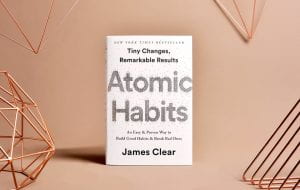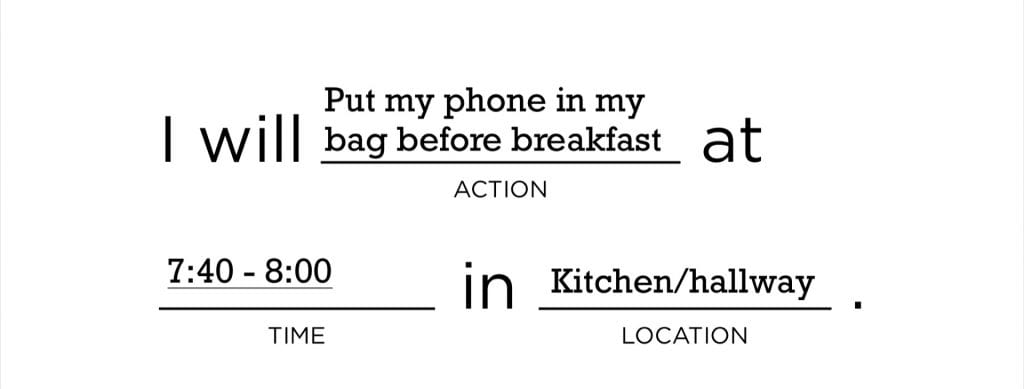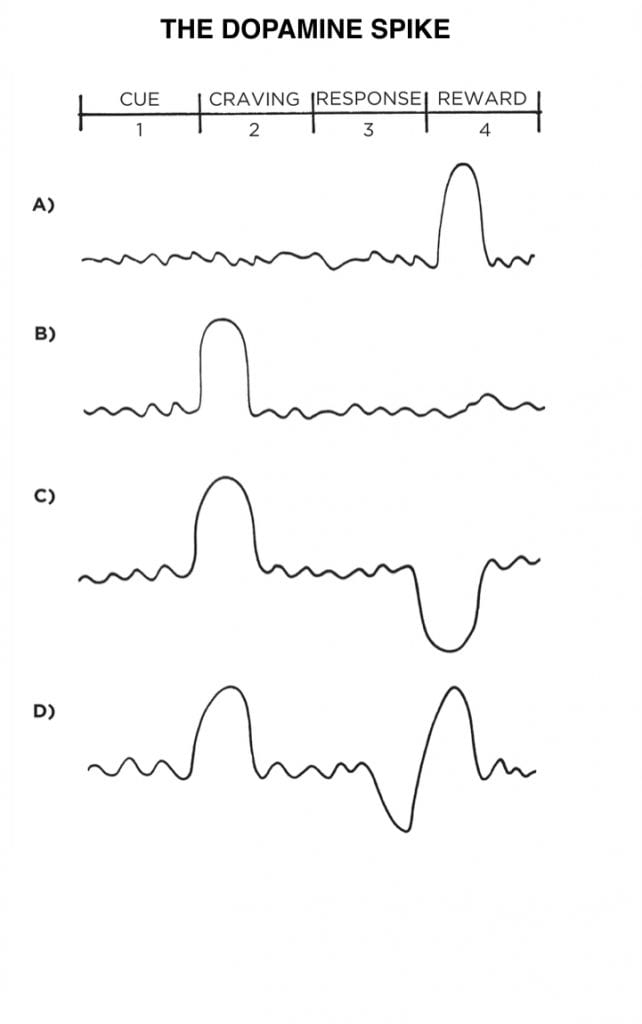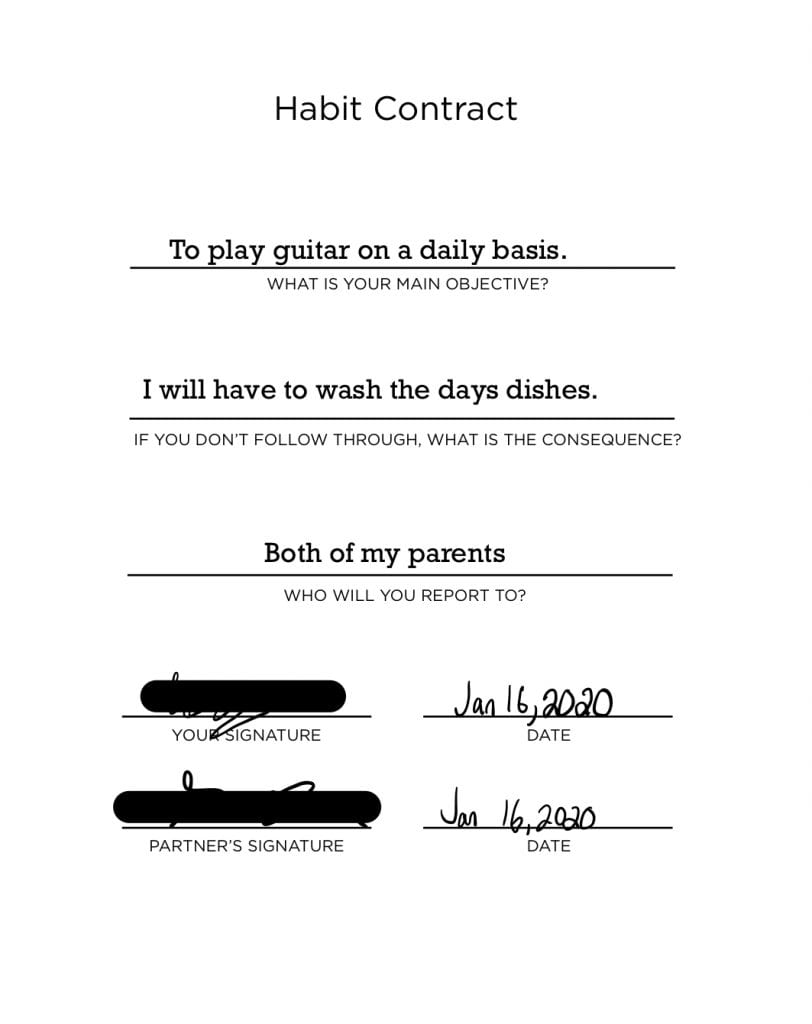For the first section of PGP this year, we have been learning about habits and habit creation through the book Atomic Habits, by James Clear. This time around I was ready to delve into the new book and siphon all of the useful content and philosophies into my brain. Personally, I don’t share the same admiration towards self-help books as some of my classmates. I know for a fact, that if I saw this book on a shelf in a library I wouldn’t check it out. I find these assigned books interesting because I know normally I wouldn’t have read them.
When I first read the title, I was sure this book was about the Manhattan Project. I mostly thought this because of our previous unit in humanities the Manhattan Project Project. After some basic research, (involving flipping over the title page) I realized that this book was about habits at an atomic scale. The book starts out with a brief autobiography of the author James Clear summarizing why he is qualified to be teaching the reader about habits. I found it incredibly interesting how dedicated he was to baseball and how, in an instant, his life was suddenly changed. When he first explains the bat incident, my mind immediately went to him being in a gang or a group of young hardened criminals. That reality was shattered only seconds later when I read about his connection to baseball and it all started to click together.
In Atomic Habits, James Clear outlines four different laws; Make It Obvious, Make It Attractive, Make It Easy, and Make It Satisfying. Each of these laws or steps helps the reader build better habits and scrap unhealthy habits. In the first couple of chapters, James Clear defines a habit as being, “A behaviour that has been repeated enough times to become automatic.” I found that this definition brought clarity throughout the book, mostly because the two words’ behaviour and habit could have been easily confused. James also talked about how the ultimate purpose of habits is to solve the problems of life with as little energy and effort as possible. My initial understanding of habits was that they help avoid problems instead of solving them. As the book progressed I grew to understand the author’s reasoning behind using habits to solve problems. I learned that if you solve a problem with a habit on a daily basis you are more than avoiding it you are eliminating it. James ends this section of the book by explaining the habit feedback loop. He explains that a proper habit can be broken down in a feedback loop that involves four steps: cue, craving, response, and reward. After trying it myself with my music, I realized that the craving comes naturally and will eventually be apparent after many repetitions of the habit.
“Habits are the compound interest of self-improvement. Getting one percent better every day counts for a lot in the long-run.” — James Clear, Atomic Habits
The First Law: Make it Obvious
This first law taught the reader about making their habits obvious. In this chapter, James Clear outlines many different tactics to achieve the first law. One of my favorite ways is being aware of your current habits. James explains that the process of behaviour change always starts with awareness. You need to be aware of your habits before you can change them. Throughout the book, the author attached different exercises that help the reader with examples in the book. Behaviour awareness was demonstrated through the habit scorecard. The scorecard is an exercise that lets you rate habits on a scale of good, bad and neutral. When I participated in this exercise, I decided to rate a day of habits to see what I was working with. Below I have attached my habit scorecard. I found that listing my daily habits helped me realize how much time I spent on my devices.
Habit Scorecard
James Clear also mentions in this chapter, the two most common cues that connect back to the feedback loop. These two cues are time and location. He also included an exercise that exemplified this point called an implementation intention. Creating an implementation intention is a strategy you can use to pair a new habit with a specific time and location. This also helped with the cue part of the feedback loop because it made it much more obvious when and where you were going to start your habit. I used this exercise to tackle a habit I found through the habit scorecard and needed to limit. Each law has an inverse that works to eliminate bad habits. For the first law, this inverse is, “Make It Invisible.” To combat this habit I knew I needed to change my environment to eliminate the habits cue. I also introduced another skill explained in this chapter, habit stacking. Habit stacking is where you take a neutral habit and stack a good habit on top to create a forced cue. By bringing these two skills together I created a plan to eliminate phone usage in the morning so I could get ready for school faster. Below I have attached these two examples.
Implementation Intention
Habit Stacking
The Second Law: Make it Attractive
The second law, Make It Attractive helps to increase the motivation you feel doing each habit. One point that James introduces is that habits are a dopamine-driven feedback loop. When dopamine rises, so does our motivation to act. He also explains that the dopamine increase can be connected to different sections of the habit. A properly structured habit introduces temptation and anticipation in different parts of the habit, instead of being structured around a reward.
Another point that I found interesting was that the culture we live in determines which behaviours are attractive to us. I found that this part tied directly into our tribalism unit, and how some people gravitate towards a group opinion of a habit. These opinions can be both helpful and destructive depending on how they affect your habits. These group opinions can also slow habit creation and repetition. It is important to notice if there are outside influences and restructure your habits to overcome this problem.
The Third Law: Make it Easy
The third law outlines that the amount of time you have been performing a habit is not as important as the number of times you have performed it. A good example of this is going to a gym to work out. This can be shown in many different ways, although two examples were shown quite prominently in this book. One of the main examples is that the more time you spend planning can sometimes make practicing a habit harder. If you research gyms in your area to find the best price as well as the closest distance, you might eventually find yourself procrastinating and not committing to your habits. James also explains that it is more beneficial to work out a little bit at a time and go to the gym more than go to the gym less and workout for longer.
The authors philosophy behind this is that completing the habit repetitively will permanently set it into your schedule. An exercise he uses to convey this thought proses is The Two-Minute Rule. The Two-Minute Rule states, “When you start a new habit, it should take less than two minutes to do.” Personally, I haven’t executed this rule yet, because I found it a little silly and a bit of an exaggeration. It definitely could work but I don’t think that I am the right candidate. The hope is to eventually have the mindset, “Well I’m already here so I guess I could stay a little longer.” To finish off this Law, James Clear writes about how you want to reduce friction in your environment to make your good habits easy, and create friction to make your bad habits impossible. I really liked this sentiment, because I realize how useful and rewarding this step really is. For me, I found it most beneficial when I left my guitar in my room, a place with easy access that I go to when I am bored.
The Fourth Law: Make it Satisfying
The first three laws demonstrate tools you can use to complete your habits for the first time. This last law is used for repeating the habit you have already started. The fourth law, Make It Satisfying is based on one of the fundamental rules of behaviour change. This rule dictates that what is immediately rewarded is repeated, and what is immediately punished is avoided. We are less likely to repeat a bad habit if it is painful or unsatisfying. The main focus of this chapter is the habit contract. A habit contract can be used to add a social cost to any behaviour. It makes the costs of violating your promises public and painful knowing that someone else is watching you can be a powerful motivator. When I completed the habit contract I realized how hard it is to commit to a habit on paper and to have a witness that you could disappoint. I already knew what habit I was going to choose but the commitment was quite menacing. Finally, I decided that I was going to go through with the habit contract and wrote one out with my mom being the witness. Deciding the consequence was one of the hardest parts for me although I doubt my mom would say the same. Below you can check out my habit contract.
Habit Contract
The book does go on for a few more chapters explaining how to align your habits with your natural abilities, and finding the peak motivation when working on tasks that are right on the edge of your current abilities. If I could have given one piece of critique, it would have been to end the book after The Fourth Law. I found these concluding chapters a little too much self-help, and not as much logical help. I really enjoyed the book and found plenty of room in my life for the four different laws. I would recommend this book to sports enthusiasts wanting to up their game, to parents that want more free time for themselves, to really anyone who wants gradual improvement in their lives. The book is short and rewarding, the perfect formula to create a good habit.
All media can be found at www.atomichabits.com/media/








